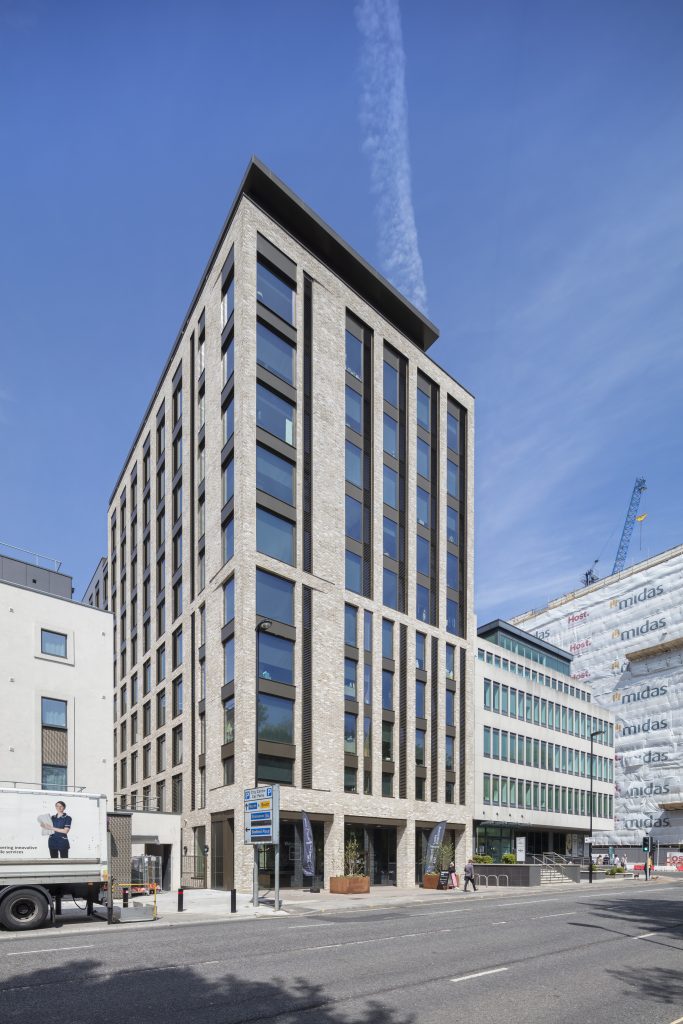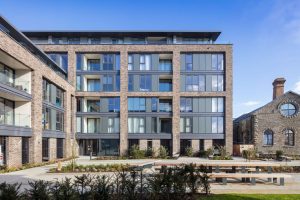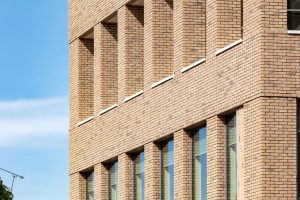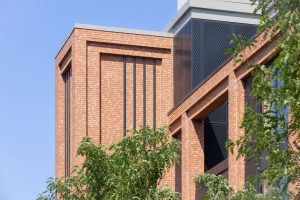
With the government’s desire to ‘Build, Build, Build’ AND hit its net–zero carbon emissions target by 2050, modern methods of construction are set to play a huge part in the solution. Here, Paul Richards, Managing Director of brick cladding systems supplier Aquarian Cladding Systems, looks at the future for bricks – and why brick cladding systems might prove to be the perfect answer.
With architects under pressure to be cleaner, faster, and safer, one of the most important decisions to be made on future building projects will be whether to achieve a brick finish with traditional brickwork or a brick cladding system.
And as the desire becomes greater to reduce both construction cost and build-time, as well as build more sustainably, widespread use of the humble brick is likely to find itself being confined to nostalgia’s past.
It’s legacy, however, will live on as brick facades remain as popular as ever in British architecture, with the use of modern brick cladding systems increasingly being used to achieve a natural finish which looks and weathers exactly like conventional brickwork – but without the limitations that come with brickwork installation.
The benefits, however, are much more far reaching than just providing a traditional brick façade and shelter from the weather.
In fact, there are many reasons why a brick cladding system is perfect on your building – and why conventional bricks are on the way out.
Learn More about Gebrik Learn More about Mechslip Learn More about Natural-X
Reduced installation times and cost
The process of laying bricks by hand is messy and weather dependent so can therefore be slow and unpredictable.
Lightweight brick cladding systems can be installed in almost all-weather conditions and installation is typically much faster than traditional brickwork, dramatically reducing installation times.
By eliminating the need for masonry supports, it offers a reduction in foundations, structural frame and prelim costs (including replacing scaffolding with mechanical access equipment and less storage requirements), greater flexibility of build sequence and earlier project completion ultimately leading to less risk of programme over-run.
Sustainable
Using brick cladding can also reduce the impact on the environment, due to the use of brick slips, which typically require 80% less volume of clay and mortar.
Thinner pieces of clay require less embodied energy to produce them and less mortar means a reduction in the supply, use and storage of sand, cement, and water.
Due to the reduced volume of materials, deliveries to site are also reduced by up to 75%, improving sustainability by reducing the impact on global resources and adding value to local communities, with less waste disposal on site too.
A better build
Brick cladding systems improve thermal efficiency and, when used as a rainscreen with a cavity, can provide healthier, breathable buildings as they dry out quicker and are therefore less prone to the risks of interstitial condensation than thicker, conventional brickwork.
Thinner walls also mean that the internal floor area can be increased, providing commercial benefit and a real value of space.
As brick cladding panels are factory made, the quality of workmanship is higher than traditional brickwork, allowing for greater quality control throughout the process and therefore a more consistent and predictable product.
A design for life
Several brick cladding systems enable the designer to achieve a brick façade without compromise. With a wide choice of natural colours and finishes they provide a wealth of design opportunities to be creative and, it could be argued, provide even greater design flexibility, allowing the designer to achieve more with a brick cladding system than with conventional brickwork.
From a weathering perspective, you can expect brick facades, when designed and built well, to improve with age, unlike other façade materials that can react negatively to UV light and show degradation from the elements over time.
Brick cladding systems also provide an improved quality of appearance compared with brickwork, which can vary wildly. With an aging workforce, bricklaying is a skill that isn’t as widely available in the market today, so using a cladding system enables you to achieve greater productivity and a higher standard of brick laying, whilst still giving you a building that’s built to last.
Is it time to carry bricks off on their stretcher?
The choice of whether to go with traditional brickwork or a brick cladding system depends on many factors, but importantly companies now have another option when considering the cost, buildability, programme, and complexity of design to achieve a perfect brick wall.
The typical ‘go-to’ solution of conventional bricklaying to achieve a brick façade now has a serious competitor. Brick cladding systems are a perfect hybrid alternative, offering all the benefits of a traditional appearance with an offsite solution that can be adapted on site.
Welcome to the fourth industrial revolution.
Working with architects, contractors, developers and installation specialists, Aquarian’s brick cladding systems, including Gebrik and Mechslip, have been used on many award-winning buildings across a wide range of sectors.




